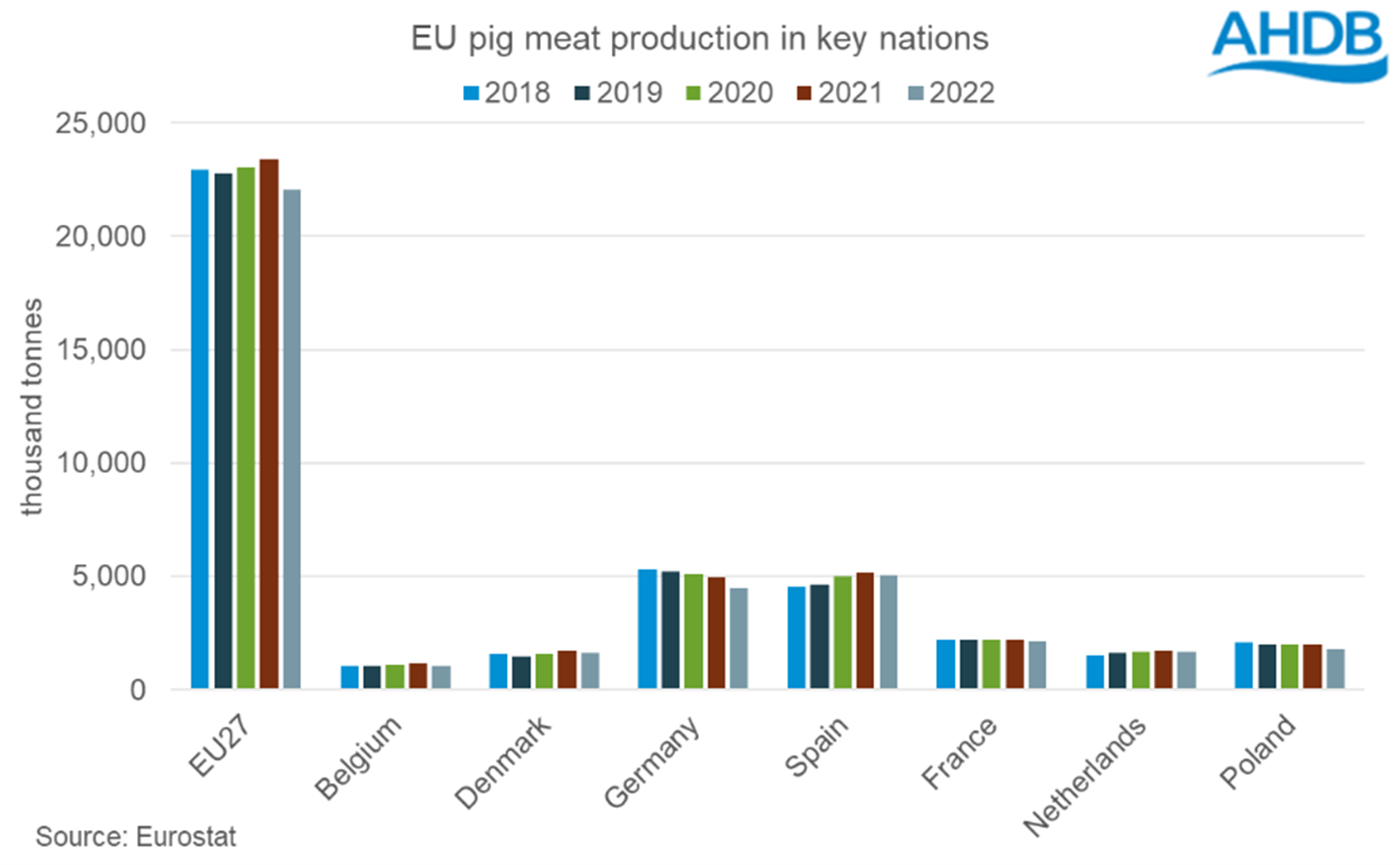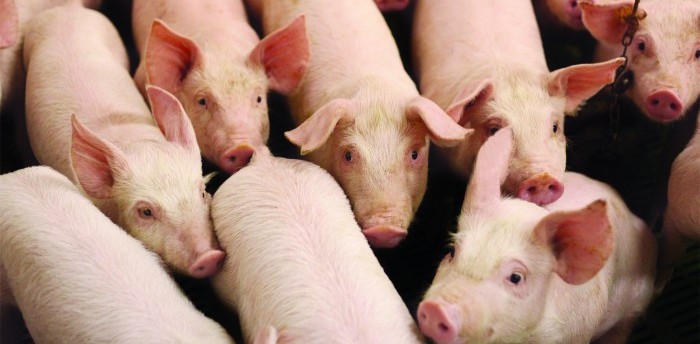EU pig meat production declined to its lowest level since 2014 last year, totalling 22.1 million tonnes, a year-on-year decline of 5.6% (-1.3million tonnes), driven by declining pig numbers and lower slaughter figures across all major producing nations.
The last 12 months have been challenging for European pork producers with input costs soaring, further outbreaks of ASF, new environmental requirements and the consumer cost of living putting a squeeze on demand.
All key producing nations saw significant decline, with Germany, hit by ASF export restrictions since September 2020, taking the biggest hit. In 2022, production declined by almost 10%, a loss of nearly half a million tonnes in just 12 months, compared with declines of 2-3% since 2017l
Furthermore, Poland, Spain, Denmark, and Belgium each recorded annual production declines between 110,000-180,000 tonnes in 2022.

Lower slaughter numbers has been the driving force behind the production decline, according to AHDB analyst Freya Shuttleworth. The total pig kill for the EU27 stood at 237 million head in 2022, the lowest recorded number since 2014 and a steep decline year on year of 12.6m head (-5.1%).
The most pronounced declines by country were seen in Germany (-4.8m head), Poland (-1.9m), Spain (-1.7m) and Belgium (-1.1m).
Looking at the EU December pig count, the EU pig herd declined by 5.8% in 2022 as a result of the challenges faced by producers and processors.
“What will be of more significance to the marketplace looking forward is the reduction in the number of breeding sows and particularly the number of sows in pig at -6.2% and -5.5% respectively,” Ms Shuttleworth said.
“The loss in these sow numbers indicates that we should see a reduction in the number of available pigs for slaughter in 2023 and supports wider industry commentary of tight supplies.
“This may mean we continue to see strong prices on the European pig market if domestic consumption remains steady, as forecast in the last EU short term outlook. Longer term, declines in both consumption and production are forecast, which is anticipated to bring the market into a more balanced position.”





